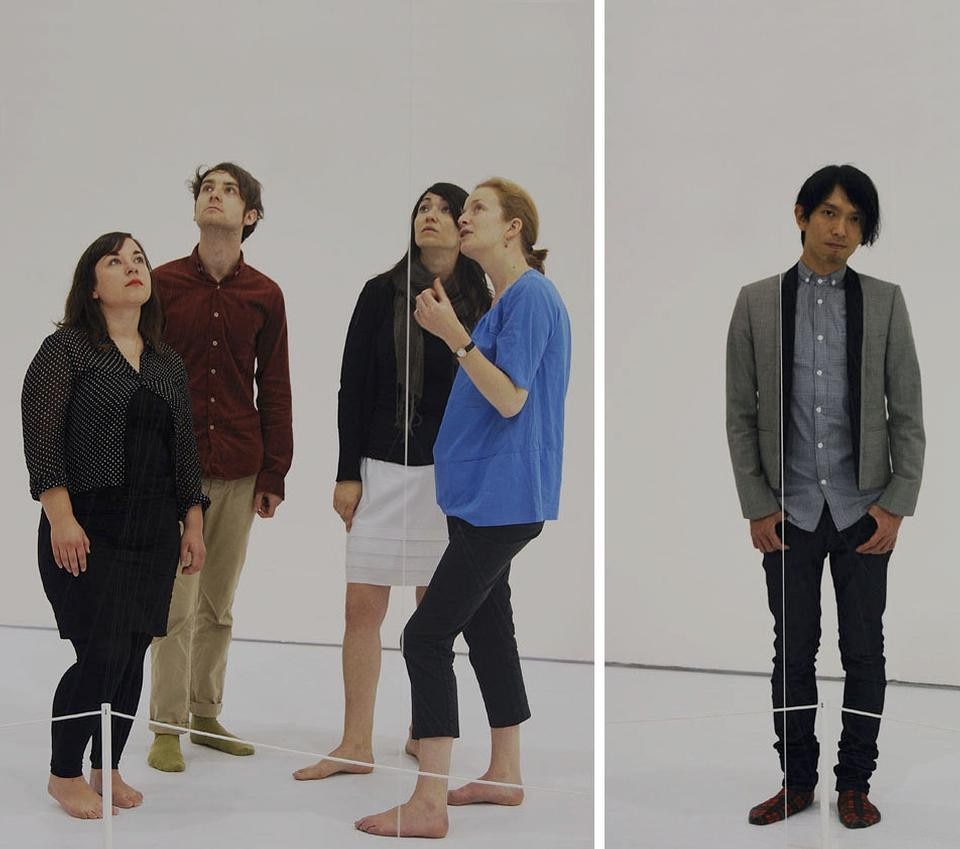Ishigami's latest installation picks out the contour of the Curve gallery with a line of 'raindrop' columns; barely perceptible white filaments float against the white walled space, tracing an 80 metre arc around the Barbican. The columns are incredible objects themselves; each a hand-rolled tube of white carbon fibre sheet measuring 0.9mm in diameter, the approximate width of a drop of rain. They rise—rather than fall—to around four metres and hover quietly in mid-air, apparently supported by nothing but will. In fact the columns are almost invisibly held by 'cloud' threads or transparent nylon fibres—2756 fibres to be precise, 52 cloud-threads to each of the 53 raindrop-column. Between these, air—as architecture—and space, its very essence; an intangible wall constructed by the suggestion of a line.
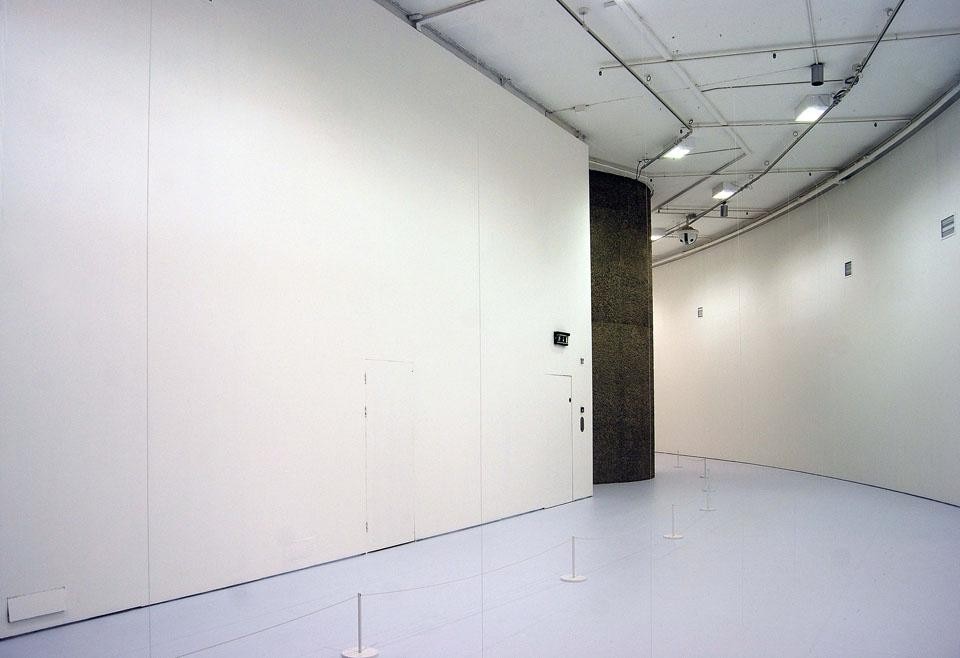
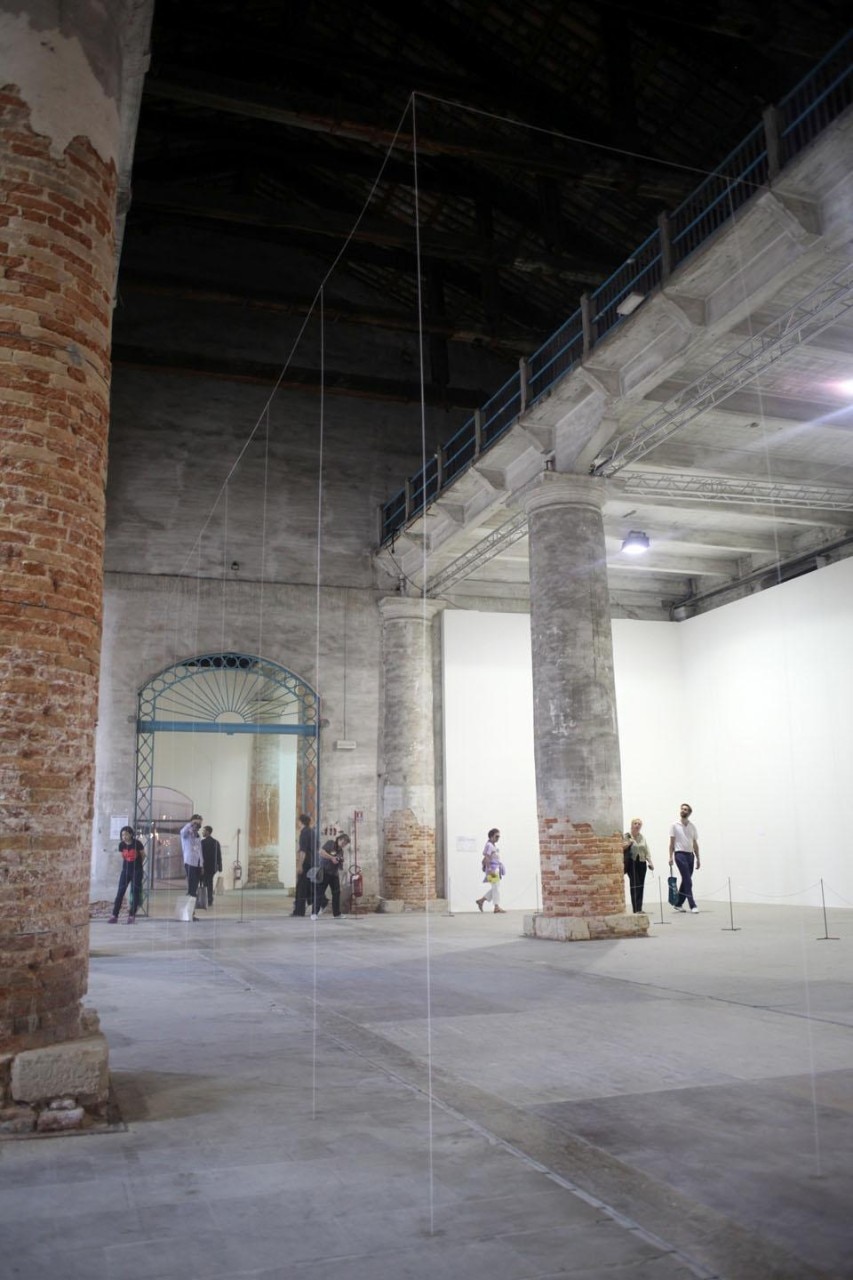
Ishigami is a practicing architect, concerned with structure and space; however, rather than the formal or even ecological implications of organic geometry, Ishigami meditates on the poetics of natural and physical structures.
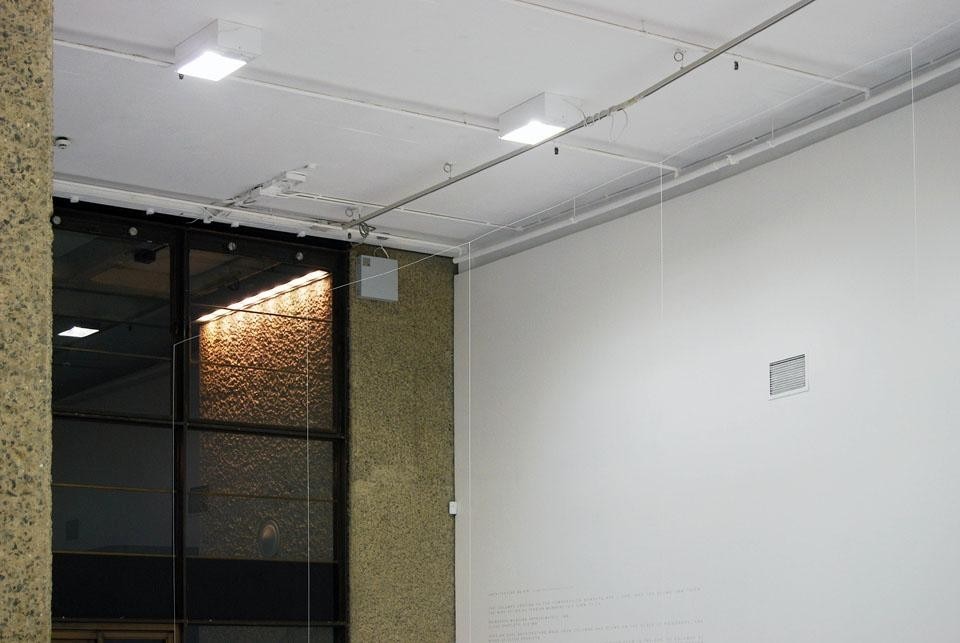

Shumi Bose
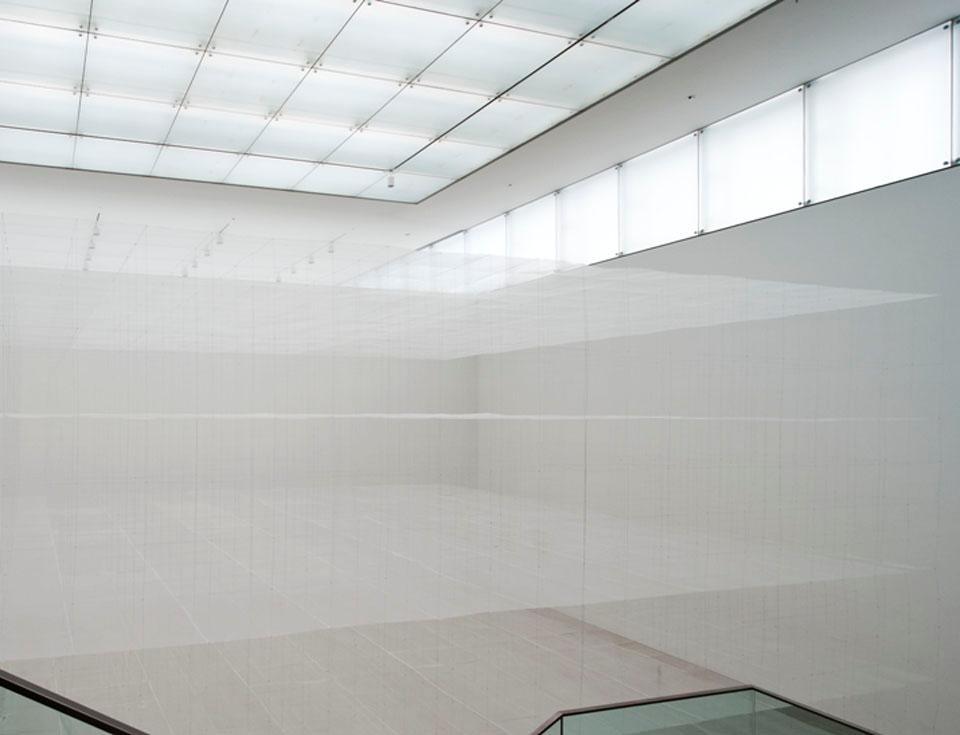
Junya Ishigami: Architecture as Air
The Curve, Barbican Centre
London


